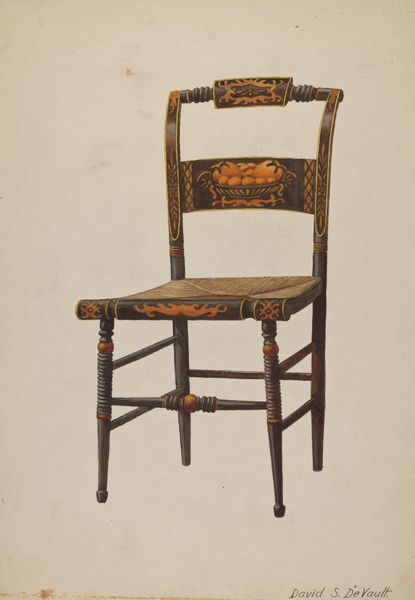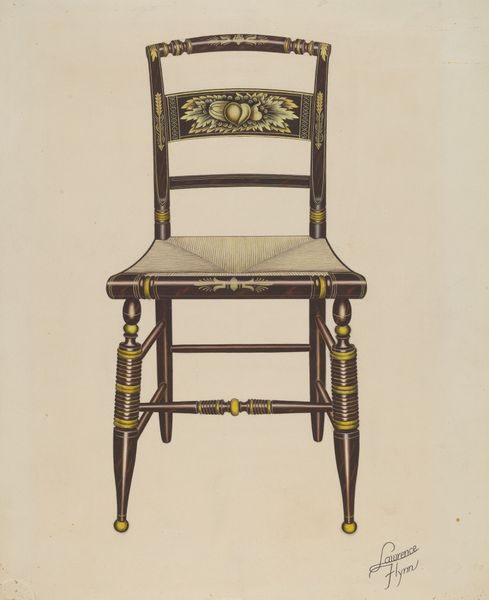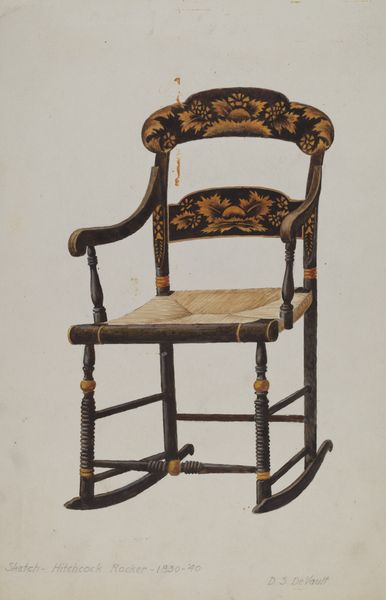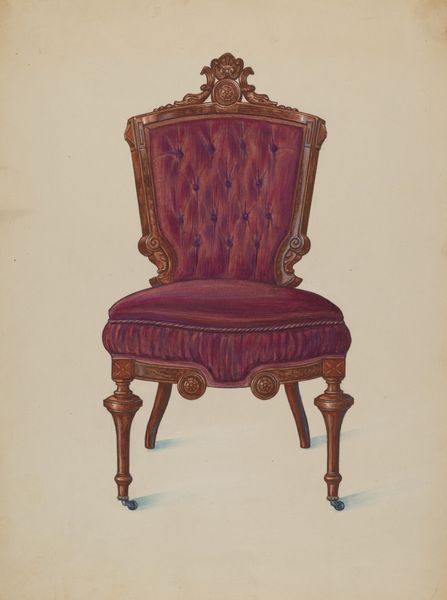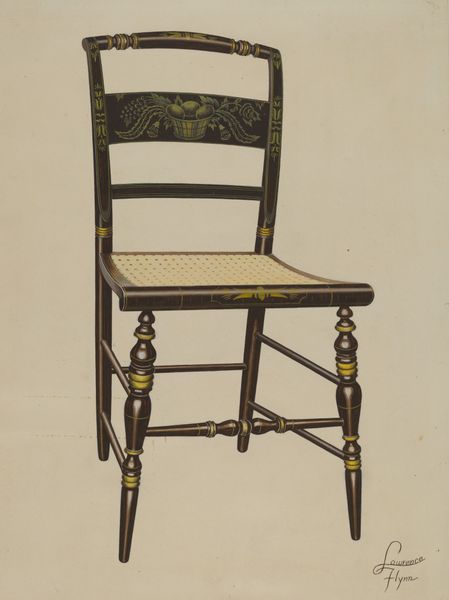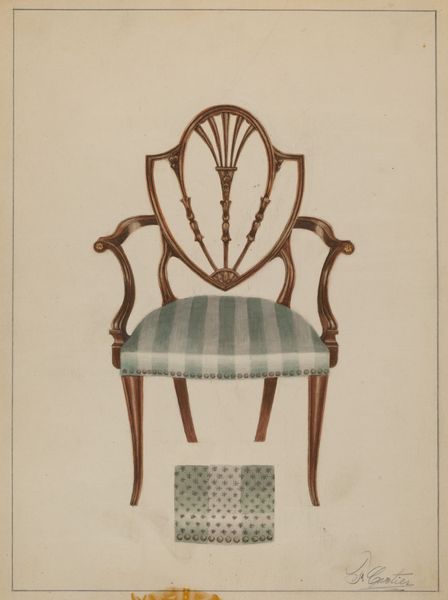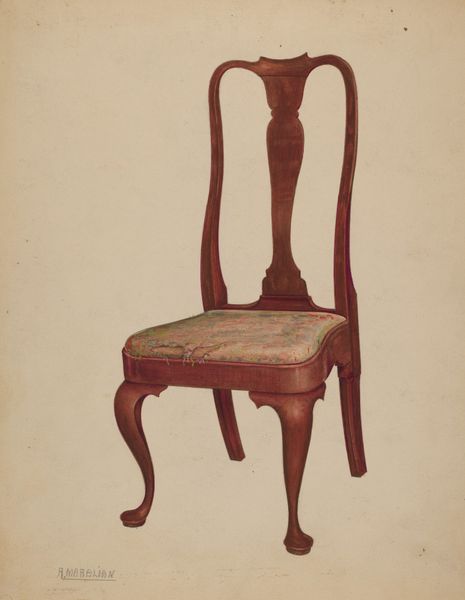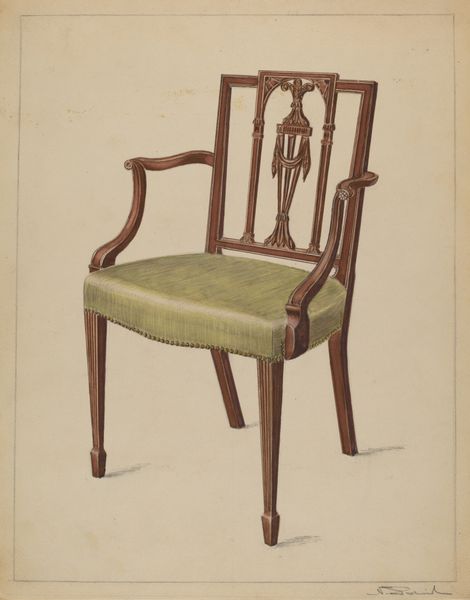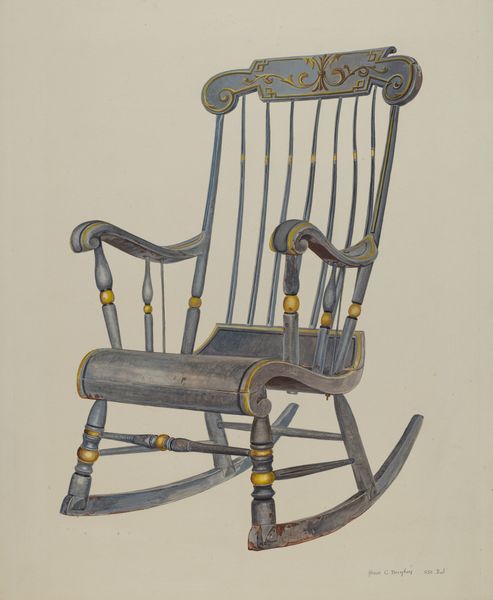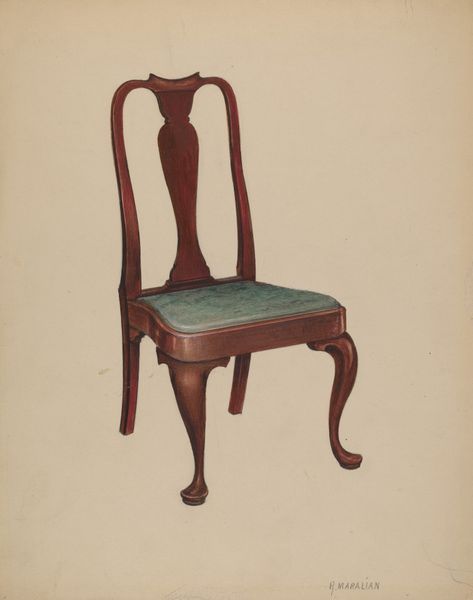
drawing, watercolor
#
drawing
#
charcoal drawing
#
oil painting
#
watercolor
#
coloured pencil
#
watercolour illustration
#
decorative-art
#
watercolor
Dimensions: overall: 30.6 x 22.8 cm (12 1/16 x 9 in.) Original IAD Object: front legs 15 1/2"; back 35".
Copyright: National Gallery of Art: CC0 1.0
Editor: Here we have Therkel Anderson’s “Hitchcock Armchair,” created around 1937. It looks like it's rendered in watercolor, maybe with some colored pencil or charcoal. The colors are so soft. I wonder about this idealized depiction of something mass-produced. What can you tell me about it? Curator: The softness you observe, and its meticulous rendering, clash intriguingly with the reality of mass production. But it invites us to consider the chair not just as a functional object but as a symbol within a broader system. How does it perform within the home, for whom, and to what effect? The early Hitchcock chairs were democratizing furniture, more affordable, but this rendering speaks to aspiration. It also exists during the Depression. What meaning does aspiration have then? Editor: I see your point. I guess I hadn't considered it in relation to the social context. I was focused on the formal qualities. Curator: It’s also useful to ask how gender and labor are at play here. Who might have painted this, for whom, and to what purpose? Are there ways this image perpetuates or resists existing gendered roles or socioeconomic power dynamics through its presentation? Editor: That is a whole new way to look at it. Now I am seeing so much that I had completely missed by focusing just on my initial impression! Curator: Right, it’s about moving past the purely aesthetic response. Thinking about decorative arts always demands an intersectional understanding. Editor: Definitely! I’ll remember that. Thanks! Curator: My pleasure. Keep questioning!
Comments
No comments
Be the first to comment and join the conversation on the ultimate creative platform.

